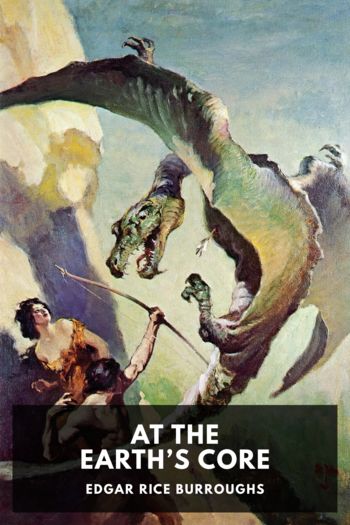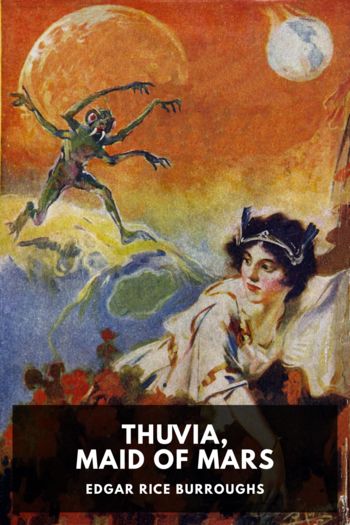The Land That Time Forgot by Edgar Rice Burroughs (short books to read .txt) 📕

Description
The Land That Time Forgot opens with the discovery near Greenland of a floating thermos flask containing a manuscript by castaway Tyler Bowen, Jr. The document recounts a series of adventures that starts with a sea battle against a German U-boat and ends on a mysterious island populated by hostile prehistoric animals and people.
The second part of the book, “The People That Time Forgot,” continues the story with the tale of Tom Billings, who has been sent on a mission to rescue Bowen after his manuscript was discovered. He flies solo over the mountainous cliffs that encircle the island and is attacked by a monstrous flying reptile, forcing him to crash-land. Billings then attempts to make his way on foot back to the rest of his party while contending with dangerous inhabitants from different stages of human development.
The final installment of the story, “Out of Time’s Abyss,” reveals what happened to Bradley, a crew member who was sent on a scouting expedition earlier in the story and was never heard from again.
This trilogy of short novels was originally published serially in 1918 in Blue Book Magazine. In 1924 they were published in a single volume by A. C. McClurg. The Burroughs fan community seems to fall into two camps about whether the story comprises three separate novellas, or whether it’s a single novel divided into three parts. This production follows the 1924 edition in combining the three into a single novel.
Read free book «The Land That Time Forgot by Edgar Rice Burroughs (short books to read .txt) 📕» - read online or download for free at americanlibrarybooks.com
- Author: Edgar Rice Burroughs
Read book online «The Land That Time Forgot by Edgar Rice Burroughs (short books to read .txt) 📕». Author - Edgar Rice Burroughs
And then, too, there was the suggestion of hope held out by the constant reiteration of the phrase, “There is a way out.” Was there a way out? What did this poor thing know?
“Who are you and how long have you been here?” Bradley suddenly demanded.
For a moment the man upon the floor made no response, then mumblingly came the words: “Food! Food!”
“Stop!” commanded the Englishman—the injunction might have been barked from the muzzle of a pistol. It brought the man to a sitting posture, his hands off the ground. He stopped swaying to and fro and appeared to be startled into an attempt to master his faculties of concentration and thought.
Bradley repeated his questions sharply.
“I am An-Tak, the Galu,” replied the man. “Luata alone knows how long I have been here—maybe ten moons, maybe ten moons three times”—it was the Caspakian equivalent of thirty. “I was young and strong when they brought me here. Now I am old and very weak. I am cos-ata-lu—that is why they have not killed me. If I tell them the secret of becoming cos-ata-lu they will take me out; but how can I tell them that which Luata alone knows?
“What is cos-ata-lu?” demanded Bradley.
“Food! Food! There is a way out!” mumbled the Galu.
Bradley strode across the floor, seized the man by his shoulders and shook him.
“Tell me,” he cried, “what is cos-ata-lu?”
“Food!” whimpered An-Tak.
Bradley bethought himself. His haversack had not been taken from him. In it besides his razor and knife were odds and ends of equipment and a small quantity of dried meat. He tossed a small strip of the latter to the starving Galu. An-Tak seized upon it and devoured it ravenously. It instilled new life in the man.
“What is cos-ata-lu?” insisted Bradley again.
An-Tak tried to explain. His narrative was often broken by lapses of concentration during which he reverted to his plaintive mumbling for food and recurrence to the statement that there was a way out; but by firmness and patience the Englishman drew out piecemeal a more or less lucid exposition of the remarkable scheme of evolution that rules in Caspak. In it he found explanations of the hitherto inexplicable. He discovered why he had seen no babes or children among the Caspakian tribes with which he had come in contact; why each more northerly tribe evinced a higher state of development than those south of them; why each tribe included individuals ranging in physical and mental characteristics from the highest of the next lower race to the lowest of the next higher, and why the women of each tribe immersed themselves each morning for an hour or more in the warm pools near which the habitations of their people always were located; and, too, he discovered why those pools were almost immune from the attacks of carnivorous animals and reptiles.
He learned that all but those who were cos-ata-lu came up cor-sva-jo, or from the beginning. The egg from which they first developed into tadpole form was deposited, with millions of others, in one of the warm pools and with it a poisonous serum that the carnivora instinctively shunned. Down the warm stream from the pool floated the countless billions of eggs and tadpoles, developing as they drifted slowly toward the sea. Some became tadpoles in the pool, some in the sluggish stream and some not until they reached the great inland sea. In the next stage they became fishes or reptiles, An-Tak was not positive which, and in this form, always developing, they swam far to the south, where, amid the rank and teeming jungles, some of them evolved into amphibians. Always there were those whose development stopped at the first stage, others whose development ceased when they became reptiles, while by far the greater proportion formed the food supply of the ravenous creatures of the deep.
Few indeed were those that eventually developed into baboons and then apes, which was considered by Caspakians the real beginning of evolution. From the egg, then, the individual developed slowly into a higher form, just as the frog’s egg develops through various stages from a fish with gills to a frog with lungs. With that thought in mind Bradley discovered that it was not difficult to believe in the possibility of such a scheme—there was nothing new in it.
From the ape the individual, if it survived, slowly developed into the lowest order of man—the Alu—and then by degrees to Bo-lu, Sto-lu, Band-lu, Kro-lu and finally Galu. And in each stage countless millions of other eggs were deposited in the warm pools of the various races and floated down to the great sea to go through a similar process of evolution outside the womb as develops our own young within; but in Caspak the scheme is much more inclusive, for it combines not only individual development but the evolution of species and genera. If an egg survives it goes through all the stages of development that man has passed through during the unthinkable eons since life first moved upon the earth’s face.
The final stage—that which the Galus have almost attained and for which all hope—is cos-ata-lu, which literally, means no-egg-man, or one who is born directly as are the young of the outer world of mammals. Some of the Galus produce cos-ata-lu and cos-ata-lo both; the Wieroos only cos-ata-lu—in other words all Wieroos are born male, and so they prey





Comments (0)